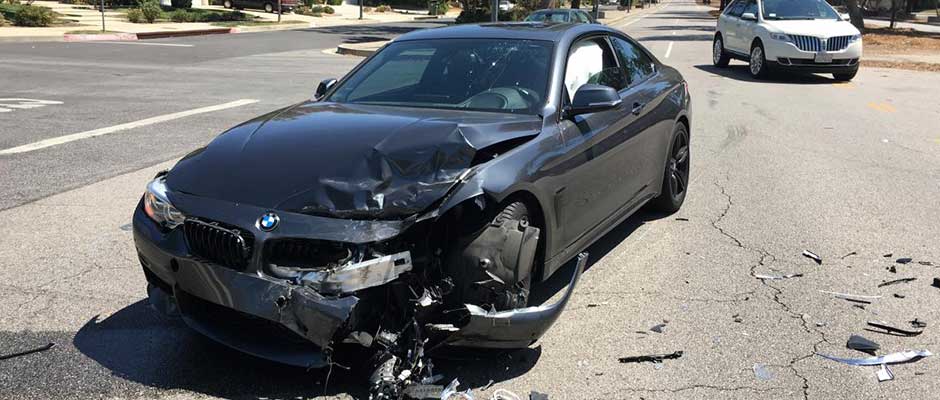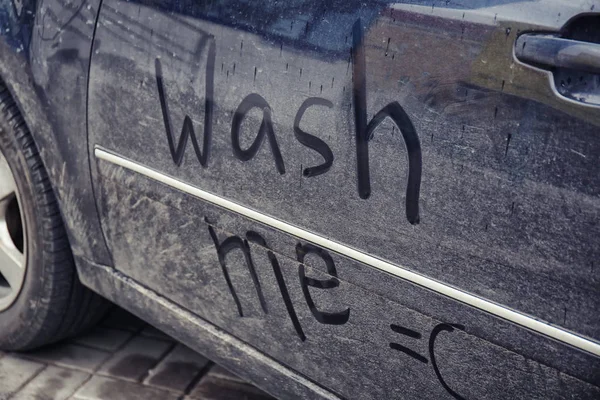
Fixing Front-End Damage After a Car Collision
Associated Collision Center wants you to be safe and aware, this blog contains great info on Fixing Front-End Damage After a Car Collision.
Everyone wants to stay safe on the road. But accidents happen, and it’s important to be prepared in the event of a collision. There are a number of common types of car accidents that can lead to front-end damage to one or more involved vehicles. They include head-on collisions, rear-end collisions, single vehicle collisions, and T-bone collisions, among others.
If you’ve been involved in a collision and sustained front-end damage, then it’s important to choose a collision repair shop you can trust to handle any repairs and get you back on the road safely.
You’ve been in an accident. What should you do next?
Whenever your car comes into contact with another vehicle, object, or person in Oregon, you’re legally required to stop and return to the scene.
It’s necessary to do your due diligence to make sure all involved parties are okay, check for injuries and damage, and exchange information. It’s also important to take specific steps to protect your interests, in case the other driver isn’t honest with the police or their insurance company.
Here’s what you should do after an accident:
- Check for injuries and move to safety.
- Don’t admit fault and take photos of the scene and damage.
- Call the police and file a report if necessary.
- Exchange information with involved parties and witnesses.
- Call your auto insurance provider (from the scene if possible) and ask any questions you have about filing an auto claim.
- Seek medical attention, if necessary.
- Take your car in for collision repair; make sure you choose a reputable auto body repair shop with experience in front-end damage repair.
Steps You Should Take To Evaluate Front-End Damage
After you’ve exchanged information with other drivers and witnesses, it’s a good idea to take a closer look at your vehicle to assess visible damage so you have as much information as possible.
Here are a few steps to follow when evaluating front-end damage:
- Check the front bumper and fender: These are the most common areas to be damaged in the event of a front-end collision. Look for any cracks or dents and measure them if possible.
- Look for cracks in your headlights: Many people drive with broken headlights thinking it’s not a big deal. But working headlights are essential to safe driving and even minor cracks can seriously impact your visibility and lead to future accidents.
- Check under the hood: Most car engines and transmissions are located in the front of the car, so it’s recommended that you check to see if there’s smoke or any obvious leaks.
- Assess your windshield: Even small cracks in your windshield can grow to become a serious problem. Identifying small damage in the glass early is the best way to avoid large cracks that will impact your visibility and be more expensive to fix.
Keep in mind that not all damage to your car will be visible. Hidden damage can lead to serious risks down the line and impact the functionality of your car. That’s why getting your car checked out by a professional is always advised.
Problems That Occur with Front-End Collision Damage and Estimated Repair Costs
Here’s a breakdown of the most common types of damage that occur in front-end collisions, as well as the estimated cost to repair front-end damage. Also learn more about repair timelines!
Frame
Depending on the angle of the collision, it’s possible that the frame of your car could be dented, scratched, chipped, or bent out of place. If left unremedied, frame damage can lead to more serious issues like rust and weather-related damage.
Depending on the extent of the damage and the tools required to fix dents or other frame damage, you could be looking at costs anywhere between $500 for minor repairs and $10,000 for total frame replacement.
Bumpers
In front-end collisions, bumpers are generally the first part of your car that makes contact. That’s why they’re often damaged. From minor scrapes and cracks, to dings and dents, to complete detachment from the vehicle, there are a variety of ways your bumper can be damaged in this type of collision.
Bumper repair can cost between $500-$1,500, while replacement costs $1,000-$3,000.
Suspension and Alignment
Suspension parts are vulnerable to breakage in front-end collisions. When they break, they can also cause alignment issues that can make your car difficult to drive. Repairs depend on the specific type of damage. But here are some suspension and alignment repair estimates to keep in mind:
- Shock-absorber replacements: $200-$1,500
- Strut replacements: $50-$800
- Coil-spring replacements: $50-$900
- Wheel alignments: $20-$500
Transmission and Engine Damage
The engine and transmission are located in the front of your car, making them vulnerable to damage in front-end collisions. Engine damage, radiator damage, oil leaks, and transmission-fluid leaks are all possible in the event of a front-end collision.
Transmission repairs generally cost between $500-$2,500. Replacing a transmission depends on a variety of factors, and can range anywhere from $2,500-$7,500. Repairing your car’s engine can vary substantially, typically falling somewhere between $2,000 and $4,500, while replacements generally start around $4,000.
Hood Damage
The hood of your car is built to pop up in the event of a front-end-collision. But it can still sustain damage, and it’s important to get hood damage fixed as soon as possible. That’s because damage under the hood can cause more serious system issues with your engine and other components.
Depending on the extent and location of the damage, hood repair can cost between $500-$2,500.
Wheels and Hubs
In a front-end collision, your wheels can get bent, which can cause serious problems on the road and impact your ability to drive safely. They can also lead to issues with your brake system.
The cost to repair damaged wheels and hubs can vary substantially depending on the type of damage (small scratches vs. punctures and bent wheels) and the number of wheels that have issues. In general, you can expect repairs to cost somewhere between $500-$1,500.
Electrical
Electrical systems in modern vehicles are complex, and can be damaged by virtually any type of collision. There are also a number of electrical components that can be impacted and may need to be replaced, so it’s difficult to predict cost estimates without a proper diagnosis.
That being said, electrical repairs usually cost anywhere from $100-$2,500.
Aesthetic Damage
Aesthetic damage may not always impact the functionality of your car, but it can definitely be an eyesore. Superficial cracks, dents, and scratches can also get worse over time, leading to lengthier and more costly repairs.
If you notice superficial scratches after a front-end collision, the cost could be anywhere from $150-$1,000 depending on the size, location, and depth of the damage.
Headlights
Broken headlights are common after a front-end collision, and even seemingly minor damage can be dangerous.
If the damage is severe, replacing your headlight assembly will usually cost about $350-$2,500 per headlight. However, if you just need to replace the bulb, you can usually get a new one for as little as $30 depending on the brand.
Windshield
Windshield damage will vary greatly depending on the severity of the collision. You could be looking at a completely shattered windshield or just a small crack. However, even tiny damage is likely to expand over time, which could result in having to replace the entire windshield.
In general, cracks smaller than a quarter can be fixed for about $50-$150. But replacements are more expensive, usually falling between $500-$2,000. Replacements will lean on the higher end if there is a camera mount involved.
This blog was contributed by by Suzanne Mackin
What to know more? please visit our last month’s Which Color Car Gets Dirtiest the Fastest? All Blog listing can be found here.






Recent Comments